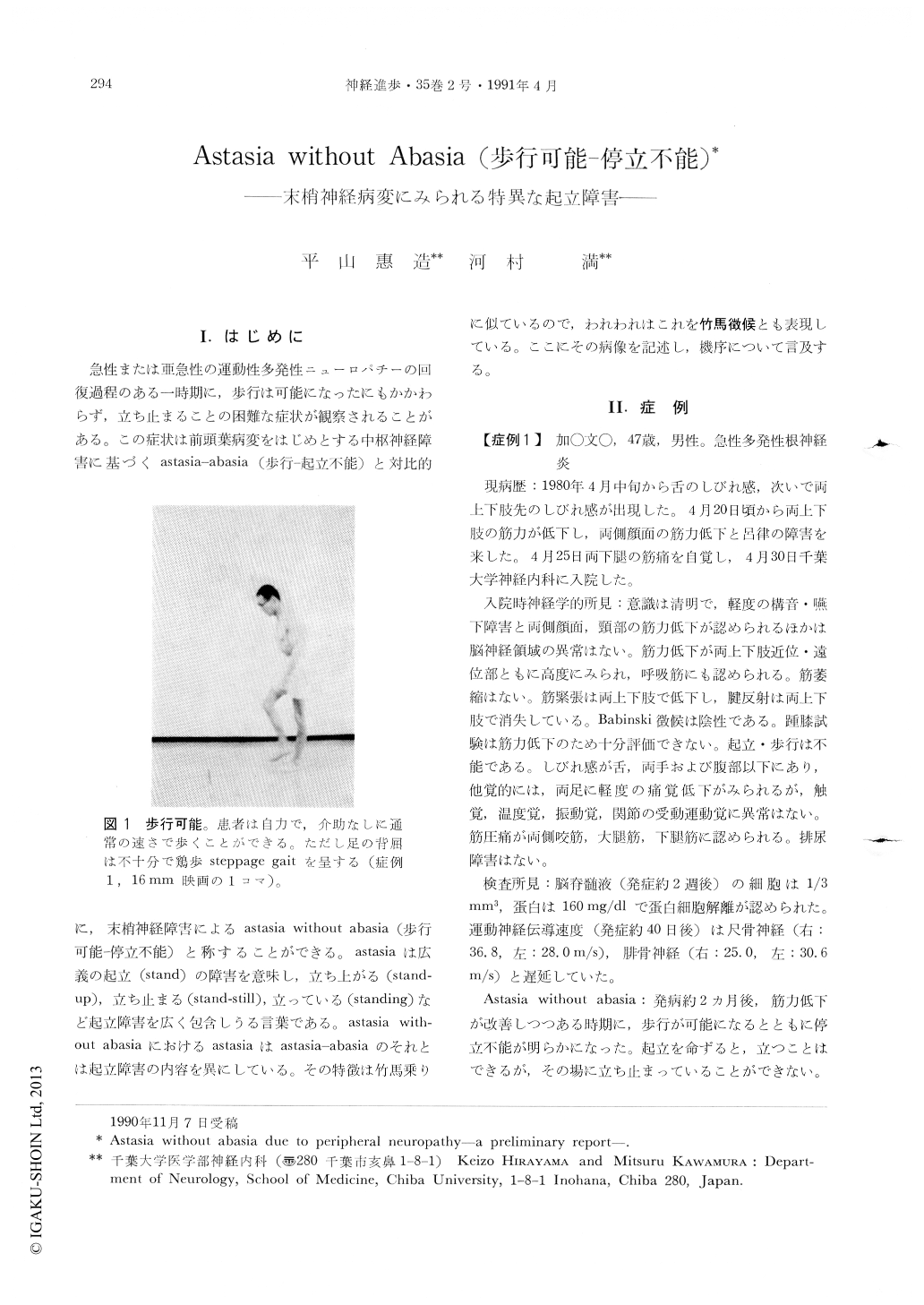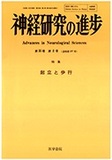Japanese
English
- 有料閲覧
- Abstract 文献概要
- 1ページ目 Look Inside
I.はじめに
急性または亜急性の運動性多発性ニューロパチーの回復過程のある一時期に,歩行は可能になったにもかかわらず,立ち止まることの困難な症状が観察されることがある。この症状は前頭葉病変をはじめとする中枢神経障害に基づくastasia-abasia(歩行―起立不能)と対比的に,末梢神経障害によるastasia without abasia(歩行可能―停立不能)と称することができる。astasiaは広義の起立(stand)の障害を意味し,立ち上がる(stand-up),立ち止まる(stand-still),立っている(standing)など起立障害を広く包含しうる言葉である。astasia with-out-abasiaにおけるastasiaはastasia-abasiaのそれとは起立障害の内容を異にしている。その特徴は竹馬乗りに似ているので,われわれはこれを竹馬徴候とも表現している。ここにその病像を記述し,機序について言及する。
During recovery from acute or subacute motor dominant polyneuropathy, there may be a certain period when the patients became able to walk, while not able to stand still. In comparison with astasia-abasia, which has been observed for example in patients with a lesion of bilateral frontal lobes, and is due to dysfuction of the central nervous system, this symptom of difficulty with standing in spite of ability in walking might be designated as astasia without abasia due to dysfunction of the peripheral nervous system. Clinical characteristics of the astasia without abasia are summarized as follows. The muscular power of the patient's lower limbs recovers to a degree in which they are able to leave their rseat and walk without any assistance, when all patients show the steppage gait. However, they can never maintain their feet in the position where they stand. During the patients desire to maintain their standing position, both legs are alternatively compelled to move forward or backward repeatedly and their feet slide over the floor quickly. The width between the feet in an attempt to stand is normal (not wide-based). When they try to stand with wide-based position of the feet, astasia may become worse but never improves. When they arrange their feet neatly, standing becomes more and more worse, whereas it is slightly improved when they place the feet in an oblique position to one another.

Copyright © 1991, Igaku-Shoin Ltd. All rights reserved.


